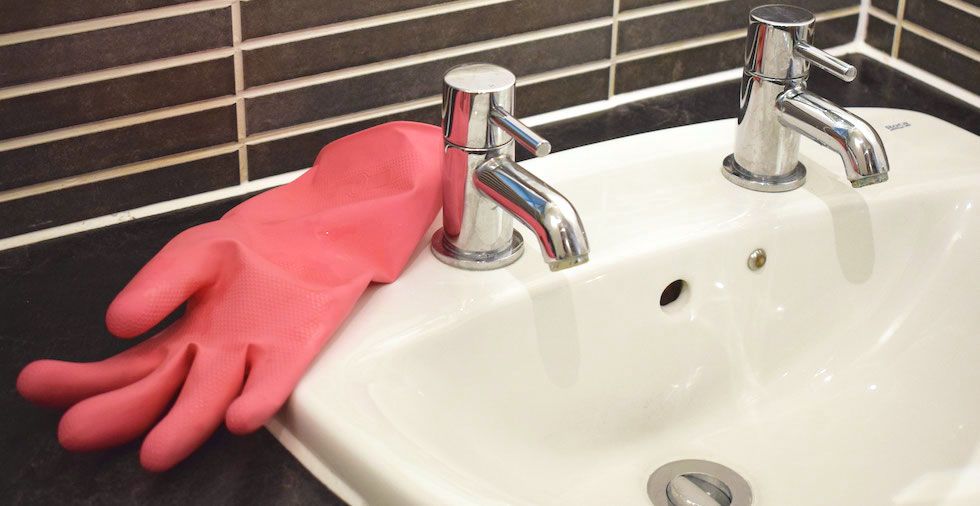A blocked sink is one of the most common plumbing issues faced by homeowners. Whether it’s in the kitchen or bathroom, a clogged sink can disrupt daily activities and, if left untreated, may lead to bigger plumbing problems. Understanding the common causes of a blocked sink and knowing how to resolve them can help you avoid costly repairs and restore your sink’s functionality quickly.
1. Accumulation of Food Waste (Kitchen Sinks)
In the kitchen, the most frequent cause of a blocked sink is food waste. Even with a garbage disposal, small food particles, grease, and oils can gradually build up in the pipes, leading to clogs.
How to Resolve:
- Use a Drain Strainer: Install a drain strainer to catch large food particles and prevent them from entering the pipes.
- Avoid Pouring Grease Down the Drain: Never pour cooking oils, fats, or grease down the drain. These substances solidify in pipes, causing major blockages.
- Boiling Water Treatment: Pouring boiling water down the drain can help dissolve grease and clear minor blockages. Repeat this process if necessary.
- Use a Plunger: If the sink is still clogged, try using a plunger to dislodge the food waste. Make sure to cover the overflow hole with a wet cloth to create suction.
2. Soap and Hair Buildup (Bathroom Sinks)
In bathroom sinks, soap scum and hair are the primary culprits of blockages. Soap residue mixes with oils and minerals in the water, creating a sticky buildup that can trap hair and other debris in the drainpipe.
How to Resolve:
- Clean the Drain Regularly: To prevent buildup, periodically clean the sink drain with a mixture of baking soda and vinegar. Let it sit for a few minutes before rinsing with hot water.
- Use a Hair Catcher: Install a hair catcher or drain filter in the bathroom sink to prevent hair from entering the pipes in the first place.
- Manual Removal: If the clog is severe, you may need to remove the drain stopper and manually pull out any hair or debris blocking the pipe.
3. Mineral Deposits and Hard Water Build-Up
In areas with hard water, mineral deposits like calcium and lime can accumulate inside pipes over time. These deposits can cause the drain to become narrower, leading to slow drainage or a complete blockage.
How to Resolve:
- Use a Descaling Agent: A commercial descaling agent or a mixture of vinegar and water can be used to break down mineral buildup. Pour it down the drain and let it sit for an hour before flushing with hot water.
- Regular Maintenance: If you have hard water, consider installing a water softener to reduce the mineral deposits in your plumbing system.
4. Clogs from Foreign Objects
Sometimes, sinks get blocked due to foreign objects accidentally being washed down the drain. Items like jewelry, cotton swabs, or small kitchen utensils can create significant blockages, especially if they get stuck in the pipes.
How to Resolve:
- Manual Removal: For small objects, you may be able to retrieve them by using a pair of tweezers or a drain snake. If the item is further down the drain, you may need to disassemble the drain trap or call a professional plumber.
- Use a Drain Snake: A drain snake can help dislodge any objects stuck in the pipes. Insert the snake into the drain and turn it to grab and pull out the object.
5. Tree Root Infiltration (Sewer Line Issues)
Although less common, tree roots can infiltrate your plumbing system, especially if you have older pipes. Tree roots seek out moisture and can invade sewer lines, causing blockages that lead to backups in your sink and other drains.
How to Resolve:
- Professional Inspection: A plumber can conduct a video inspection to check for tree root infiltration. If roots are found in the sewer line, the plumber may use a mechanical auger to remove them.
- Sewer Line Repair or Replacement: In severe cases, the affected pipe may need to be repaired or replaced to prevent future root intrusion.
6. Clogged P-Trap
The P-trap is the U-shaped pipe located beneath your sink that prevents sewer gases from entering your home. Over time, the P-trap can accumulate debris, causing a blockage that impedes water flow.
How to Resolve:
- Clean the P-Trap: If you suspect the P-trap is clogged, you can try to clean it yourself. Place a bucket underneath to catch any water, unscrew the trap, and remove any debris inside. Rinse it thoroughly before reinstalling.
- Call a Professional: If you’re unable to clear the clog or if it’s a recurring issue, consider calling a plumber to inspect the trap and make any necessary repairs.
7. Grease Build-Up (Kitchen Sinks)
Grease and fat buildup is one of the most common causes of blocked kitchen sinks. As grease cools, it solidifies and sticks to the walls of the pipes, creating a stubborn blockage that can impede water flow.
How to Resolve:
- Boiling Water: Pouring boiling water down the drain can help dissolve grease and clear the blockage. Repeat this process a few times for better results.
- Baking Soda and Vinegar: Mix baking soda and vinegar to break down grease. Allow the mixture to sit for 30 minutes before flushing with hot water.
- Hydro-Jetting: In severe cases, a professional plumber may need to use hydro-jetting to blast away the grease buildup from inside the pipes.
8. Collapsed or Damaged Pipes
Over time, pipes can become damaged or corroded, especially in older plumbing systems. Collapsed or cracked pipes can cause blockages that prevent water from draining properly.
How to Resolve:
- Pipe Inspection: If you suspect that the pipes are damaged, a plumber can conduct a video inspection to identify the problem.
- Pipe Repair or Replacement: Damaged pipes may need to be repaired or replaced to restore proper water flow and prevent recurring blockages.
Conclusion
Blocked sinks are a common household issue, but many clogs can be easily prevented or resolved with the right approach. By understanding the causes of a blocked sink and taking proactive measures, such as regular maintenance and proper waste disposal, you can keep your plumbing system functioning smoothly. For stubborn or complex clogs, don’t hesitate to call a professional plumber to ensure the problem is resolved safely and effectively.



